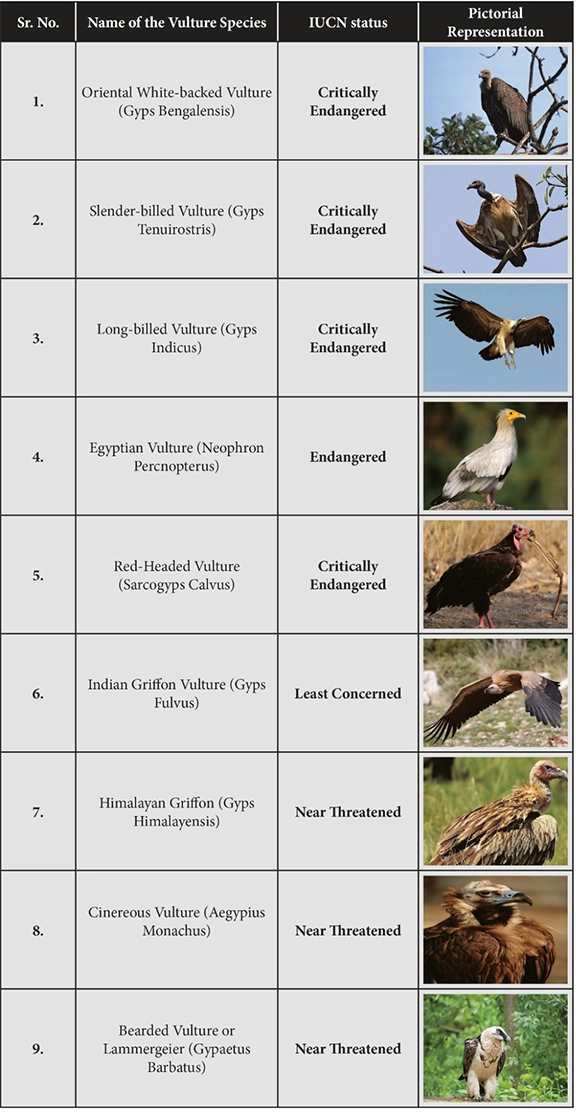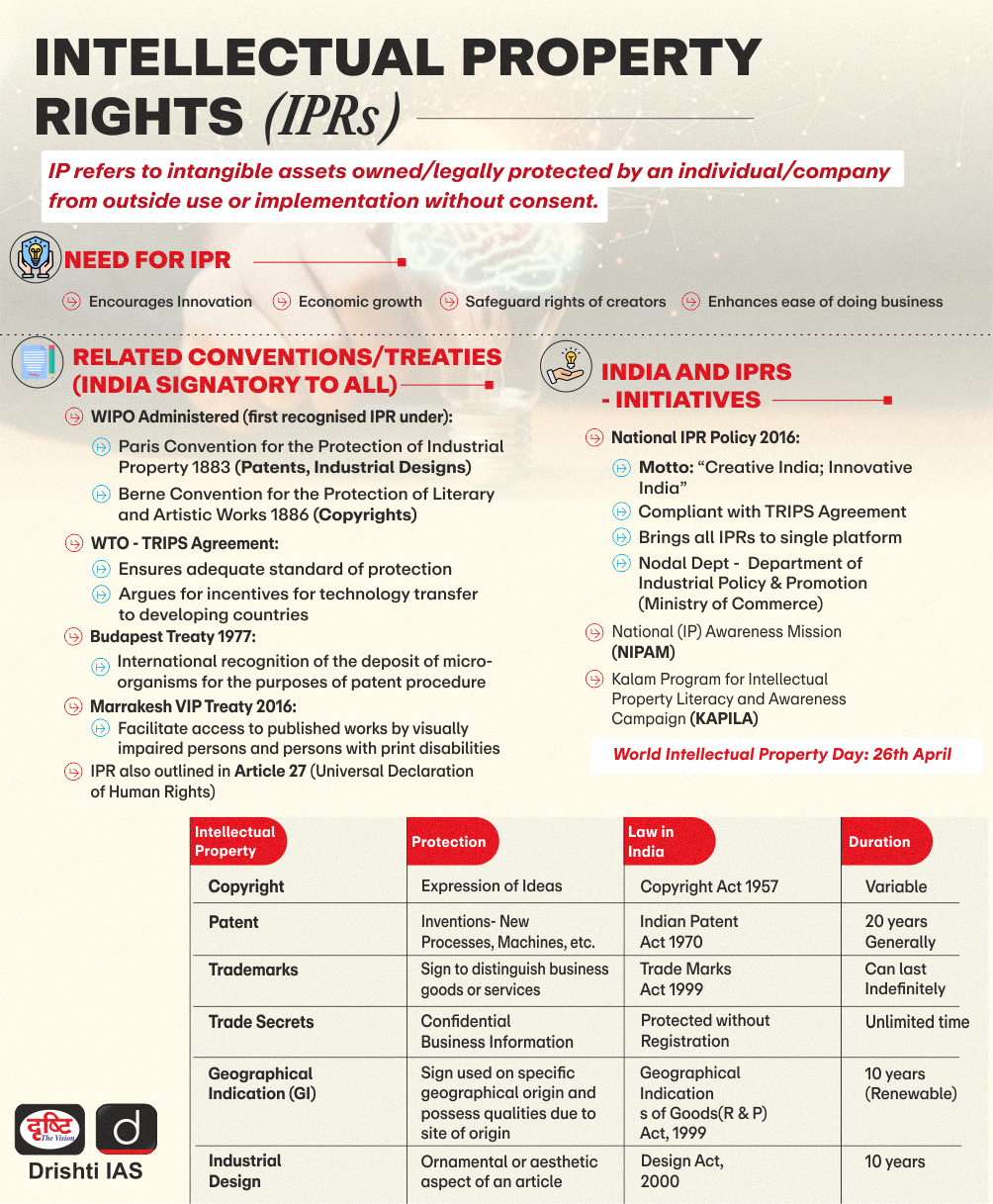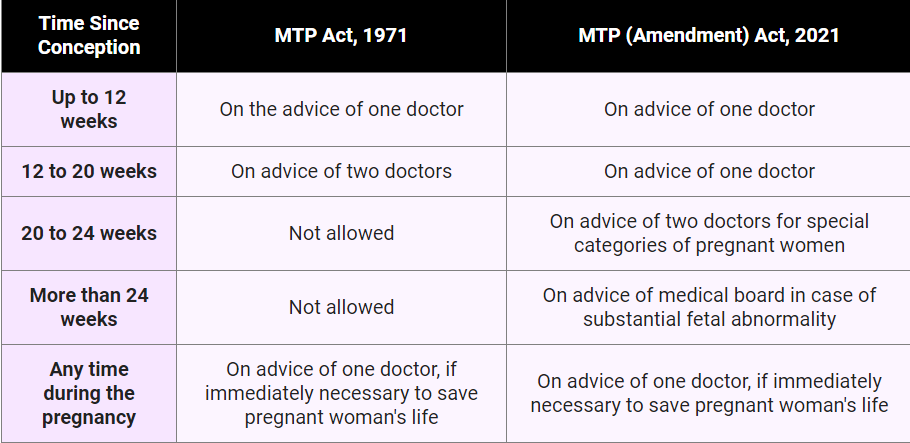Internal Security
Left Wing Extremism
For Prelims: :LWE, Maoism, SAMADHAN Initiative, Tribal Issues.
For Mains: Issues Associated with Left Wing Extremism in India, Challenges to Internal Security of India, LWE, Maoism, Socialism, Measures to ensure Peace and Security in India.
Why in News?
Recently, two different incidents of naxalites attack were reported from Chhattisgarh and Assam.
- 29 Naxalites were killed in the Kanker area of Chattisgarh in one of the largest operations by security forces in Chhattisgarh.
- In another incident, three vehicles of the paramilitary Assam Rifles were ambushed in eastern Assam’s Tinsukia district.
What is Naxalism?
- Origin:
- The term Naxalism derives its name from the village Naxalbari of West Bengal.
- It originated as rebellion against local landlords who bashed a peasant over a land dispute.
- The movement soon spread across Eastern India in less developed areas of states such as Chhattisgarh, Odisha and Andhra Pradesh.
- Left-wing extremists (LWE) are popularly known as Maoists worldwide and as Naxalites in India.
- Objective:
- They advocate for the overthrow of the Indian government through armed revolution and the establishment of a communist state based on Maoist principles.
- They view the state as oppressive, exploitative, and serving the interests of the ruling elite, and seek to address socio-economic grievances through armed struggle and people's war.
- Modus Operandi:
- Naxalite groups engage in a range of activities, including guerrilla warfare, attacks on security forces, extortion, intimidation, and propaganda.
- They try to capture State power through a combination of armed insurgency, mass mobilisation and strategic alliances.
- They target government institutions, infrastructure, and economic interests, as well as perceived collaborators and informants.
- Naxalites also operate parallel governance structures in certain areas under their control, providing basic services and dispensing justice.
- Status of LWE in India:
- The year 2022 witnessed the lowest number of incidents of violence and deaths in Naxal-hit areas in the last four decades.
- Violent incidents in Naxalism-affected States have come down by 77% in 2022 compared to the high of 2010.
- The number of districts affected dropped from 90 to 45.
- The number of deaths of security forces and civilians in LWE violence has also reduced by 90% in 2022 compared to the high of 2010 (98 in 2022 from 1005 in 2010).
- States Affected by LWE:
- The States of Chhattisgarh, Jharkhand, Odisha, Bihar, West Bengal, Andhra Pradesh, Telangana, Maharashtra, Madhya Pradesh and Kerala are considered LWE affected.
- The Red Corridor is the region in the central, eastern and southern parts of India that experience severe Naxalism–Maoist insurgency.
What are the Causes for Naxalism?
- Socio-Economic Factors:
- Poverty and Lack of Development: Naxalism thrives in underdeveloped regions with high poverty rates.
- Adivasi (indigenous) and Dalit (lower caste) communities often face social exclusion and lack access to basic necessities like healthcare and education.
- This fuels resentment and makes them receptive to Naxalite ideology.
- Land Rights Disputes:
- Adivasis have been displaced from their traditional lands due to mining and development projects, creating anger and a sense of injustice.
- Naxalites exploit these disputes to project themselves as champions of the marginalised.
- Exploitation by Powerful Entities:
- Tribal communities are particularly vulnerable to exploitation by landlords, moneylenders, and mining companies.
- Naxalites position themselves as protectors against such exploitation.
- Caste Discrimination: Dalits, who face social and economic marginalisation, may find Naxalism appealing as it challenges the existing caste hierarchy.
- Poverty and Lack of Development: Naxalism thrives in underdeveloped regions with high poverty rates.
- Political Factors:
- Weak Governance and Lack of Infrastructure: Naxalism flourishes in areas with a weak government presence.
- Poor infrastructure like roads and communication networks allows Naxalites to operate with less interference.
- No Follow-Up from Administration: It is seen that even after police take hold of a region, administration fails to provide essential services to the people of that region.
- Lack of Coordination between Centre and State Government: State governments consider naxalism as the central government’s issue and thus are not taking any initiatives to fight it.
- Disillusionment with Democracy: Naxalites feel that the democratic system has failed to address their needs and grievances.
- Naxalites offer an alternative, albeit violent, path to change.
- Weak Governance and Lack of Infrastructure: Naxalism flourishes in areas with a weak government presence.
- Additional factors:
- Globalization: Discontent with the impact of globalisation, particularly displacement due to land acquisition for corporations, can contribute to Naxalite support.
- Confusion over tackling naxalism as a social issue or as a security threat.
- Wide Geographic Spread: LWE groups operate in remote and inaccessible areas; dense forests, hilly terrains, and where there is lack of proper infrastructure making it challenging for security forces to track them down.
What are Initiative of Government Against Naxalism?
- National Policy and Action Plan to address Left Wing Extremism 2015
- SAMADHAN
- Aspirational Districts Programme
- Security Related Expenditure (SRE) Scheme: Scheme implemented in 10 LWE affected States for Security Related Expenditure.
- It relates to training and operational needs of security forces, ex-gratia payment to the family of civilians/security forces killed/injured in LWE violence, rehabilitation of surrendered LWE cadres, community policing, village defence committees and publicity materials.
- Special Central Assistance (SCA) for most LWE Affected Districts: It aims to fill the critical gaps in Public Infrastructure and Services, which are of emergent nature.
- Scheme of Fortified Police stations: Under the scheme, 604 fortified police stations have been constructed in LWE affected areas.
- Road Connectivity Project for LWE Affected Areas (RCPLWE): It aims at improving road connectivity in LWE affected States.
Way Forward
- Targeted Security Operations: The security forces need to conduct targeted operations against LWE groups, using intelligence-based approaches and avoiding collateral damage.
- Rehabilitation and Reintegration: The government needs to provide rehabilitation and reintegration support to former extremists who have renounced violence by providing them with education, training, employment as well as psychosocial support.
- States should rationalise their surrender policy in order to bring innocent individuals caught in the trap of LWE into the mainstream.
- Empowering Local Peace Ambassadors: Identify and empower influential individuals within communities who are committed to promoting peace and countering extremist narratives.
- There is a need to foster open channels of communication between the government, security forces, and affected communities.
- Also, there is a need to encourage community leaders, NGOs, and religious institutions to play a role in mediating conflicts and addressing local issues.
- Socio-Economic Development: The government needs to focus on improving socio-economic conditions in areas affected by left wing extremism such as investing in infrastructure, creating employment opportunities, and providing better access to education and healthcare.
- Ecological and Sustainable Development Initiatives: Introduce projects that focus on sustainable development and conservation of natural resources in areas affected by extremism.
- By involving local communities in environmental protection efforts, a sense of ownership and responsibility can be fostered, leading to reduced extremism.
|
Drishti Mains Question: Frequent death of armed personnel in anti-insurgency operations highlights the setback to India’s internal security capability at many levels and the challenge that left-wing extremism (LWE) continues to pose. Discuss. |
UPSC Civil Services Examination, Previous Year Question (PYQ)
Mains:
Q. The persisting drives of the government for development of large industries in backward areas have resulted in isolating the tribal population and the farmers who face multiple displacements. With Malkangiri and Naxalbari foci, discuss the corrective strategies needed to win the Left-Wing Extremism (LWE) doctrine that affected citizens back into the mainstream of social and economic growth. (2015)
Q. Article 244 of the Indian Constitution relates to administration of scheduled areas and tribal areas. Analyze the impact of non-implementation of the provisions of the Fifth schedule on the growth of Left-wing extremism. (2018)
Q. What are the determinants of left-wing extremism in the Eastern part of India? What strategy should the Government of India, civil administration and security forces adopt to counter the threat in the affected areas? (2020)


Biodiversity & Environment
Vultures at Risk in Protected Areas
For Prelims: Wildlife (Protection) Act, 1972, Convention on International Trade in Endangered Species of Wild Fauna and Flora (CITES), International Union for Conservation of Nature (IUCN), Pesticide Poisoning
For Mains: Status and reasons behind the decline of the Vulture Population, Government initiatives to tackle the issue of the declining Vulture Population, India’s Collaboration With Global Wildlife Conservation Efforts.
Why in News?
Recent studies have found that even vultures in protected areas are not safe from toxic drugs like Diclofenac. Scientists investigated the feeding habits of vultures in India by analysing the DNA in vulture faecal samples from vulture nests and roosts across six states between 2018 and 2022.
- Vultures are known for their incredible ability to cover large distances while searching for food. These vast foraging territories may even expose them to diclofenac from neighbouring countries where the drug might still be in use.
What are the Key Facts About the Vultures Species in India?
- About:
- It is one of the 22 species of large scavenger birds that live predominantly in the tropics and subtropics.
- They act an important function as nature’s garbage collectors and help to keep the environment clean of waste.
- They also play a valuable role in keeping wildlife diseases in check.
- India is home to 9 species of Vulture namely the Oriental white-backed, Long-billed, Slender-billed, Himalayan, Red-headed, Egyptian, Bearded, Cinereous, and the Eurasian Griffon.
- Decline in Population:
- A significant decline in vulture populations has been observed in South Asian nations, particularly India, Pakistan, and Nepal.
- This decline is primarily attributed to the widespread use of diclofenac, a veterinary drug, during the late 1990s and early 2000s.
- This resulted in a population decline exceeding 97% in some regions, creating a consequential ecological crisis.
- Role of Vultures in Ecosystem:
- Decomposition and Nutrient Cycling:
- Vultures efficiently consume carrion (dead animals), preventing carcasses from accumulating and rotting.
- This helps to decompose organic matter and return nutrients back into the soil, which benefits plant growth and the overall health of the ecosystem.
- Disease Prevention:
- Vultures have incredibly strong stomachs with very acidic digestive juices. This powerful acid can kill bacteria and viruses that can cause diseases like anthrax, rabies, and botulism, thus, acting as true “dead-end” for pathogens.
- Indicator Species:
- Vultures are sensitive to changes in their environment. A decline in vulture populations can be an indicator of a wider ecological problem, such as pollution or a shortage of food sources.
- Decomposition and Nutrient Cycling:
What are the Reasons Behind the Decline in Vulture Populations?
- Drug Poisoning:
- The widespread use of veterinary drugs like diclofenac, ketoprofen, and aceclofenac in the late 20th century has had devastating consequences for vulture populations.
- These drugs, commonly used to treat pain and inflammation in livestock, are toxic to vultures when they feed on carcasses of treated animals.
- Diclofenac in particular causes fatal kidney failure in vultures, and similar effects have been documented with ketoprofen and aceclofenac.
- Secondary Poisoning:
- Vultures are scavengers, often consuming carcasses contaminated with pesticides or other toxins
- Vultures feeding on carcasses of animals hunted with lead ammunition can suffer fatal lead poisoning.
- This "secondary poisoning" poses a significant threat, further declining their populations.
- Vultures are scavengers, often consuming carcasses contaminated with pesticides or other toxins
- Habitat Loss:
- Urbanisation, deforestation, and agricultural expansion have led to habitat loss, destroying vulture nesting sites, roosting areas, and food sources. The lack of suitable habitat hinders their survival.
- Collisions with Infrastructure:
- Vultures are vulnerable to collisions with power lines, wind turbines, and other man-made structures, leading to injuries or fatalities and contributing to population decline.
- Poaching and Hunting:
- In some areas, vultures are targeted due to cultural beliefs or illegal wildlife trade, adding to their struggle to survive.
- Disease Outbreaks:
- Diseases like avian pox and avian flu can also have a detrimental impact on vulture populations, leading to further decline.
What are the Vulture Conservation Efforts Taken by India?
- Addressing the Drug Threat:
- Ban on Diclofenac: Recognising the devastating impact of diclofenac, India banned its veterinary use in 2006.
- This was a critical step in protecting vultures from kidney failure caused by ingesting carcasses of treated livestock.
- The Ministry for Environment, Forests and Climate Change launched a Vulture Action Plan 2020-25 for the conservation of vultures in the country.
- It will ensure minimum use of Diclofenac and prevent the poisoning of the principal food of vultures, the cattle carcasses.
- Expansion of the Ban: In August 2023, India further banned the use of ketoprofen and aceclofenac for veterinary purposes, acknowledging their potential threat to vultures.
- Ban on Diclofenac: Recognising the devastating impact of diclofenac, India banned its veterinary use in 2006.
- Captive Breeding and Reintroduction:
- Vulture Conservation Breeding Centres (VCBCs): India established a network of VCBCs, the first being set up in Pinjore, Haryana in 2001.
- These centres focus on the captive breeding of endangered vulture species, providing a safe environment to raise healthy populations for reintroduction into the wild.
- Currently, there are nine Vulture Conservation and Breeding Centres (VCBC) in India, of which three are directly administered by the Bombay Natural History Society (BNHS).
- Vulture Conservation Breeding Centres (VCBCs): India established a network of VCBCs, the first being set up in Pinjore, Haryana in 2001.
- Vulture Restaurant:
- In a proactive effort to conserve the declining vulture population in Jharkhand, a ‘Vulture Restaurant’ has been established in Koderma district. The initiative aims to address the adverse impact of livestock drugs, particularly diclofenac, on vultures.
- Other Vulture Conservation Initiatives:
- Vulture species are conserved under the Integrated Development of Wildlife Habitats (IDWH) ‘Species Recovery Programme’.
- The Vulture Safe Zone programme is being implemented at eight different places in the country where there were extant populations of vultures, including two in Uttar Pradesh.
- Bearded, Long-billed, Slender-billed, and Oriental white-backed are protected in Schedule 1 of the Wildlife Protection Act 1972. Rest are protected under ‘Schedule IV’.
- International Collaboration:
- SAVE (Saving Asia’s Vultures from Extinction): The consortium of like-minded, regional and international organizations, created to oversee and co-ordinate conservation, campaigning, and fundraising activities to help the plight of South Asia’s vultures.
Case Study on Bald Eagle of US:
- The American bald eagle is a powerful symbol of resilience.
- Its population once declined significantly due to the devastating effects of
- Dichlorodiphenyltrichloroethane (DDT), a powerful insecticide that disrupted their reproduction.
- DDT resulted in female eagles laying extremely thin-shelled eggs, leading to nesting failures.
- In order to tackle the issue, a nationwide ban on DDT for agricultural use was implemented in 1972. This crucial step, along with the passage of the Endangered Species Act in 1973, provided much-needed protection for the eagles.
- Hunting restrictions, combined with habitat preservation around nesting sites and even breeding programs, allowed the bald eagle population to steadily recover.
- According to the US officials, bald eagle numbers have quadrupled since 2009. This success story culminated in the eagle's well-deserved delisting from the endangered species list in 2007.
Way Forward
- There is a need for regulating harmful veterinary drugs (like diclofenac) and promoting safer alternatives. Also, promoting wider bans on similar drugs like nimesulide is crucial.
- Education on proper carcass disposal & establishment of vulture feeding centers with safe food availability is needed to ensure vulture protection.
- There should be proper identification & protection of nesting or roosting sites along with the creation of corridors between feeding and nesting areas.
- There is a need for continuous monitoring and vigilance to ensure the complete elimination of diclofenac use in veterinary practice.
- The success of vulture conservation hinges on a multi-pronged approach, and India's ongoing efforts offer a model for other countries facing similar challenges.
|
Drishti Mains Question: Q. Discuss the status and reasons behind the decline of the Vulture Population, Also, mention the government initiatives to tackle the declining Vulture Population. |
UPSC Civil Services Examination, Previous Year Question (PYQ)
Prelims
Q. Vultures which used to be very common in Indian countryside some years ago are rarely seen nowadays. This is attributed to (2012)
(a) the destruction of their nesting sites by new invasive species
(b) a drug used by cattle owners for treating their diseased cattle
(c) scarcity of food available to them
(d) a widespread, persistent and fatal disease among them.
Ans: (b)


Indian Economy
RBI Guidelines for Asset Reconstruction Companies
For Prelims: Reserve Bank of India (RBI), Asset Reconstruction Companies, SIDBI, NABARD, Non-Performing Assets (NPAs), SARFAESI Act(2002)
For Mains: Significance of Asset Reconstruction Companies, Banking Sector and Non-Performing Assets.
Why in News?
The Reserve Bank of India (RBI) has issued a direction outlining updated guidelines for Asset Reconstruction Companies (ARCs), effective from 24th April 2024.
What are the RBI Guidelines for Asset Reconstruction Companies (ARCs)?
- Increased Minimum Capital Requirement:
- ARCs are now required to have a minimum capital of Rs 300 crore, a significant increase from the previous requirement of Rs 100 crore.
- Existing ARCs are granted a transition period to achieve the new minimum Net Owned Fund (NOF) threshold of Rs 300 crore by 31st March 2026.
- ARCs must ensure a minimum capital of Rs 200 crore by 31st March 2024, as part of the transition towards the higher capital requirement.
- In case of non-compliance at any of the above stages, the non-complying ARC shall be subject to supervisory action, including a prohibition on undertaking incremental business till it reaches the required minimum NOF applicable at that time.
- Eligibility as Resolution Applicants:
- ARCs with a minimum NOF of Rs 1000 crore are permitted to act as resolution applicants in the asset resolution process under Insolvency and Bankruptcy Code, 2016 (IBC).
- Investment Opportunities:
- ARCs are allowed to deploy funds in government securities and deposits with scheduled commercial banks, Small Industries Development Bank of India (SIDBI), National Bank for Agriculture and Rural Development (NABARD) or such other entities as may be specified by the central bank from time to time.
- Additionally, ARCs can invest in short-term instruments like money market mutual funds, certificates of deposit, and corporate bonds/commercial papers with a short-term rating equivalent to AA- or above by an eligible credit rating agency.
- However, there is a cap of 10% of the NOF on the maximum investment in such short-term instruments.
What are Asset Reconstruction Companies?
- About:
- ARCs are financial institutions that buy Non-Performing Assets (NPAs) or bad assets from banks and financial institutions.
- This allows the banks and institutions to clean up their balance sheets.
- It is incorporated under the Companies Act, 2013 and registered with the Reserve Bank of India under the Securitisation and Reconstruction of Financial Assets and Enforcement of Security Interest (SARFAESI) Act, 2002.
- ARCs are financial institutions that buy Non-Performing Assets (NPAs) or bad assets from banks and financial institutions.
- Examples:
- National Asset Reconstruction Company Limited (NARCL) has been established by banks to aggregate and consolidate stressed assets for subsequent resolution. It is majority-owned by Public Sector Banks (PSBs) with a 51% stake.
- India Debt Resolution Company Ltd. (IDRCL) is another entity that will then attempt to sell the stressed assets in the market.
- PSBs and Public Financial Institutes (FIs) will hold a maximum of 49% stake in IDRCL. The remaining 51% stake will be with private-sector lenders.
- Function:
- Empowered by the SARFAESI Act, 2002. ARCs specialize in the recovery and turnaround of distressed assets.
- They purchase bad debt from lenders either in cash or through a combination of cash and security receipts.
- Empowered by the SARFAESI Act, 2002. ARCs specialize in the recovery and turnaround of distressed assets.
- Business Model:
- Acquisition of Stressed Loans: Lenders sell stressed loans to ARCs at a discount, freeing up their resources to focus on fresh loans.
- Security Receipts: ARCs issue security receipts to lenders, redeemable upon recovery of the specific loan.
- They also charge a management fee of 1.5% to 2% of the asset value annually and earn from recoveries, sharing upside with the selling financial institutions.
- Challenges:
- ARCs often deal with aged NPAs, which present challenges in terms of valuation and recovery due to prolonged delinquency.
- Aggregating debt from multiple lenders to the same borrower can be complex, requiring coordination and agreement among various stakeholders.
- ARCs face difficulties in raising funds on their balance sheets, limiting their capacity to acquire distressed assets or provide necessary support to borrowers for revival.
- Determining the fair value of distressed assets for acquisition and recovery purposes can be challenging, particularly when dealing with illiquid or complex assets.
- Recent Changes in ARC Regulations by RBI:
- Strengthening Corporate Governance: RBI mandated that the chair of the board and at least half the directors in a board meeting must be independent directors to enhance corporate governance at ARCs.
- Increased Transparency: ARCs are required to disclose their track record on returns generated for security receipt investors and engage with rating agencies for schemes floated in the last eight years to improve transparency.
- Investment Requirements: ARCs must invest in security receipts (SRs) at a minimum of either 15% of the transferors' investment in such receipts or 2.5% of the total receipts issued, whichever is higher, as against the previous requirement of 15% of total security receipts in all cases.
- SRs are instruments issued by ARCs to Qualified Buyers (QB) in exchange for their purchase of distressed assets from banks and Non-Banking Financial Companies (NBFCs).
|
Drishti Mains Question: Q. Evaluate the challenges faced by Asset Reconstruction Companies (ARCs) in the Indian financial landscape and suggest measures to address them effectively |
UPSC Civil Services Examination, Previous Year Question (PYQ)
Prelims
Q. With reference to the governance of public sector banking in India, consider the following statements:(2018)
- Capital infusion into public sector banks by the Government of India has steadily increased in the last decade.
- To put the public sector banks in order, the merger of associate banks with the parent State Bank of India has been affected.
Which of the statements given above is/are correct?
(a) 1 only
(b) 2 only
(c) Both 1 and 2
(d) Neither 1 nor 2
Ans: (b)
Exp:
- The government has done capital infusion in state owned banks to support credit expansion and to help them tide over losses resulting from the provisions that are to be made for non-performing assets (NPAs). But the capital infusion trend in state-owned banks
- has not been specific in a direction, like increasing or decreasing trend. While it has increased in some years, it has also decreased in a few years. Hence, statement 1 is not correct.
- Union Government in February 2017 had approved the merger of five associate banks along with the Bharatiya Mahila Bank with SBI. The purposes of the merger were rationalisation of public bank resources, reduction of costs, better profitability, and lower cost of funds leading to a better rate of interest to the public at large and improve productivity and customer service of the public sector banks. Parliament passed the State Banks (Repeal and Amendment) Bill, 2017 to merge six subsidiary banks with State Bank of India to affect rationalisation of public bank.
- Hence, statement 2 is correct.
Q2. With reference to the Non-banking Financial Companies (NBFCs) in India, consider the following statements: (2010)
- They cannot engage in the acquisition of securities issued by the government.
- They cannot accept demand deposits like Savings Account.
Which of the statements given above is/are correct?
(a) 1 only
(b) 2 only
(c) Both 1 and 2
(d) Neither 1 nor 2
Ans: (b)

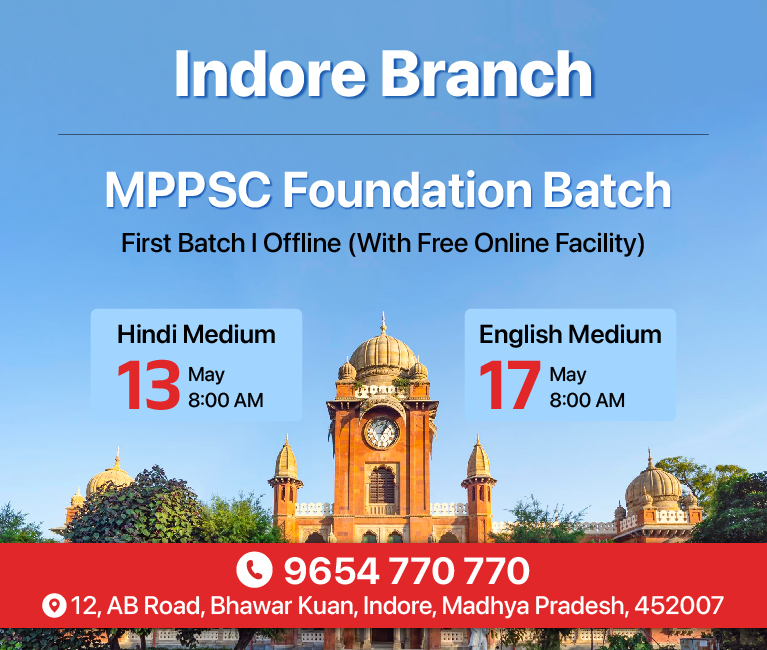
Economy
US Priority Watch List
For Prelims: Intellectual Property Rights Policy Management framework, National IPR (Intellectual Property Rights) Policy 2016, Geographical Tag, Copyrights, Universal Declaration of Human Rights.
For Mains: Intellectual Property Rights, Need and Challenges.
Why in News?
Recently, the United State’s USTR Special 301 Report has again included India in the ‘Priority Watch List’ (PWL) of countries, along with China, Russia, Venezuela, and three others due to concerns about Intellectual Property (IP) protection and enforcement.
- Over the years, including 2020 and 2021, India has been listed in the USTR Special 301 Report.
What is the USTR's Special 301 Report?
- About:
- Mandated by Section 182 of the US Trade Act of 1974, it is an annual review conducted to assess the adequacy and effectiveness of US trading partners' IP protection and enforcement practices.
- Designation Criteria:
- The USTR considers factors like the severity of IP concerns, the economic impact on US rights holders, and the lack of progress made in addressing identified issues when designating countries to the PWL or Watch List.
- Priority Watch List (PWL): Countries on the PWL face the most serious allegations of inadequate IP protection and enforcement. The USTR may initiate formal trade investigations or impose sanctions if they fail to demonstrate significant improvements.
- Watch List: Countries placed on the Watch List have some concerning IP practices, but the issues may not be as severe as those on the PWL. The USTR uses the Watch List to monitor countries and encourage them to strengthen their IP regimes.
- The USTR considers factors like the severity of IP concerns, the economic impact on US rights holders, and the lack of progress made in addressing identified issues when designating countries to the PWL or Watch List.
- US Government Initiatives:
- Advocacy Efforts: The USTR employs bilateral negotiations, World Trade Organisation (WTO) participation, and stakeholder engagement to bolster IP protection with trading partners.
- Technical Assistance: The US strengthens developing countries' IP systems through training for legal and administrative personnel.
- Anti-Counterfeiting and Piracy Efforts: The USTR fights counterfeiting and piracy through joint actions, information exchange, and capacity building with partner nations and organizations.
What are the Concerns Raised Related to India in the Report?
- India's Placement: India has consistently been placed on the 'priority watch' list in the Special 301 Report, indicating significant concerns regarding IP protection, enforcement, and market access for American IP stakeholders.
- As per the report, India remains one of the most challenging major economies concerning IP protection and enforcement.
- Inadequate IP Enforcement: The USTR report identifies various shortcomings in India's IP enforcement, including high rates of online piracy, a significant backlog in trademark opposition cases, and insufficient legal mechanisms for protecting trade secrets.
- These include high customs duties on IP-intensive products and concerns over whether India has an effective mechanism for the early resolution of potential pharmaceutical patent disputes.
- Copyright Compliance Issues: India should fully implement World Intellectual Property Organisation (WIPO) Internet Treaties and avoid extending copyright licenses to interactive transmissions to protect copyright holder rights.
- Interactive Transmissions are transmissions where the user actively participates, such as streaming music or downloading videos.
- US-India Trade Policy Forum: While some progress has been noted under the US-India Trade Policy Forum regarding issues like trademark infringement investigations and pre-grant opposition proceedings, several longstanding concerns remain unaddressed.
- India’s Stand on Intellectual Property Rights: India’s stance is that its laws are in strict adherence to the World Trade Organisation’s Trade-Related Aspects of Intellectual Property Rights (TRIPS) Agreement, and it is not obligated to make changes as per other international rules.
Way Forward
- Joint IP Commission: Establish a permanent India-US IP Commission with representatives from government, industry, and academia.
- This approach mirrors the successful US-China IP Working Group, credited with fostering dialogue and addressing specific concerns. This commission can:
- Identify areas of mutual concern and prioritize joint action plans.
- Facilitate knowledge exchange on best practices in IP protection and enforcement.
- Develop harmonized IP policies to bridge legal discrepancies.
- Focus on Capacity Building: The US can offer technical assistance to India's patent office and judiciary to:
- Streamline patent application processes and reduce backlogs.
- Enhance training for judges and law enforcement on IP enforcement mechanisms.
- This strategy echoes the success of the US-Mexico-Canada Agreement (USMCA), which includes provisions for technical assistance on IP enforcement.
- Transparency and Stakeholder Engagement: Both countries should promote increased transparency in IP decision-making processes.
- Regular consultations with industry stakeholders from both nations can identify practical challenges and solutions.
- This approach draws on the EU's transparent IP enforcement regime, which emphasizes stakeholder involvement.
- Dispute Resolution through Arbitration: Establish a streamlined arbitration mechanism for resolving IP disputes between companies. This could involve:
- Independent panels of experts with knowledge of both US and Indian IP law.
- Faster and more cost-effective resolution compared to traditional litigation.
- This approach is similar to the successful IP arbitration provisions within the Singapore-India Comprehensive Economic Cooperation Agreement (CEPA).
Conclusion
By fostering collaboration, capacity building, and establishing efficient dispute resolution mechanisms, India and the US can move beyond the "Priority Watch List" narrative. This innovative approach, inspired by successful global practices, can pave the way for a more harmonious and productive relationship, fostering innovation and economic growth for both nations.
|
Drishti Mains Question: Q. Discuss the implications of the India-US dispute over the Intellectual Property Rights (IPR) regime on bilateral relations, considering the divergent perspectives. Evaluate the challenges and opportunities for both countries in reconciling their differences. |
UPSC Civil Services Examination, Previous Year Questions (PYQs)
Prelims
Q1. With reference to the ‘National Intellectual Property Rights Policy’, consider the following statements: (2017)
- It reiterates India’s commitment to the Doha Development Agenda and the TRIPS Agreement.
- Department of Industrial Policy and Promotion is the nodal agency for regulating intellectual property rights in India.
Which of the above statements is/are correct?
(a) 1 only
(b) 2 only
(c) Both 1 and 2
(d) Neither 1 nor 2
Ans: (c)
Q2. Consider the following statements: (2019)
- According to the Indian Patents Act, a biological process to create a seed can be patented in India.
- In India, there is no Intellectual Property Appellate Board.
- Plant varieties are not eligible to be patented in India.
Which of the statements given above is/are correct?
(a) 1 and 3 only
(b) 2 and 3 only
(c) 3 only
(d) 1, 2 and 3
Ans: (c)
Mains
Q. In a globalized world, Intellectual Property Rights assume significance and are a source of litigation. Broadly distinguish between the terms—Copyrights, Patents and Trade Secrets. (2014)

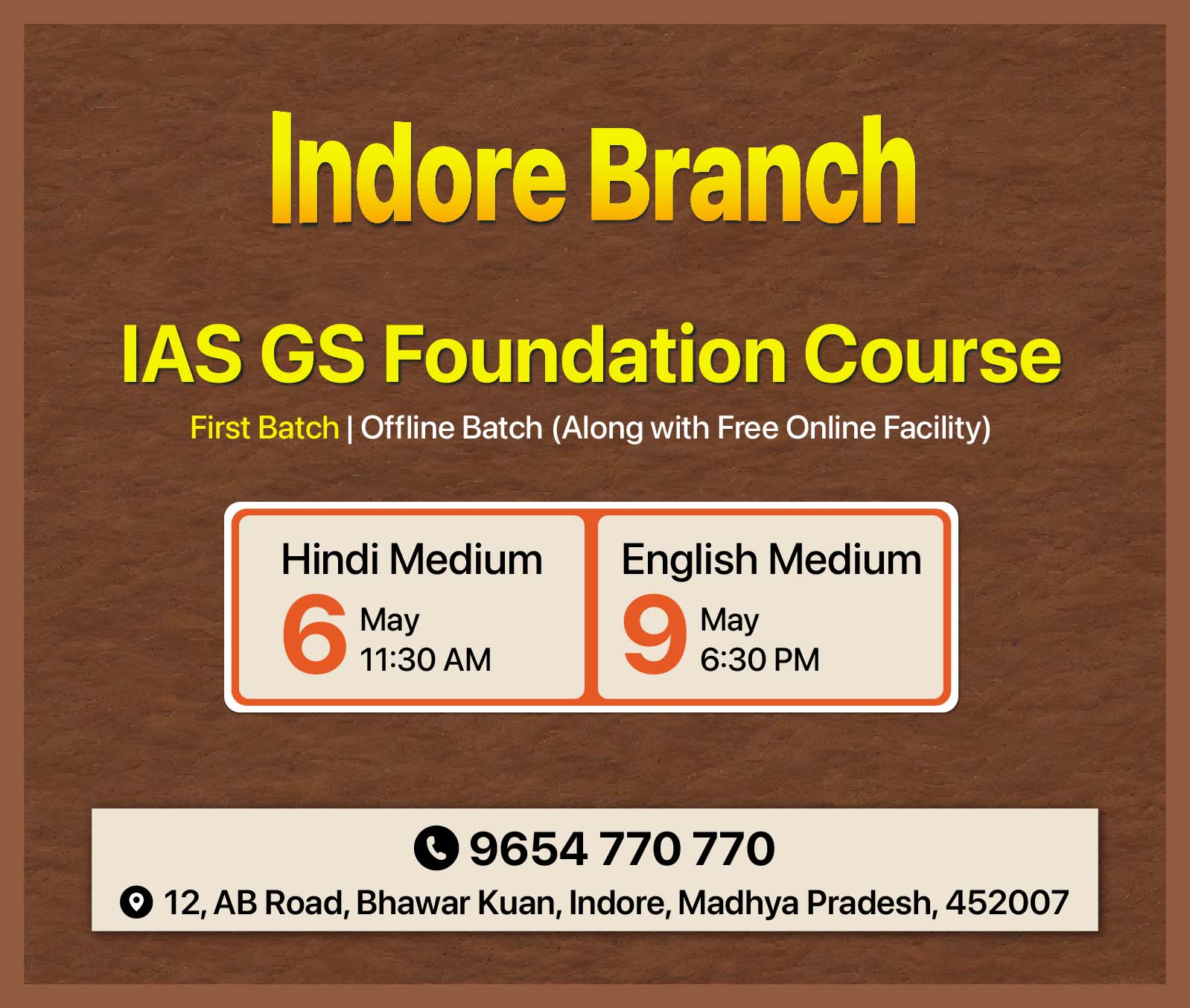
Important Facts For Prelims
50 Years of Chipko Movement
Why in News?
Recently, 50 years have been completed for the Chipko Movement, the landmark environmental movement that was started in Uttarakhand in 1973.
What was the Chipko Movement All About?
- Origin:
- The movement started in the 1970s in Chamoli, Uttarakhand when the region was facing rampant deforestation due to commercial activities by outside contractors.
- It started when the women from the Himalayan villages of Reni and Mandal hugged trees in the nearby forests to protect them from commercial loggers.
- About:
- The name of the movement ‘chipko’ comes from the word ’embrace’, as the villagers hugged the trees and encircled them to prevent being hacked.
- By hugging they gave a clear message that “We, our nature and us, are One”.
- It was a non-violent agitation to protect nature.
- Its biggest victory was making people aware of their rights to forests, and how grassroots activism can influence policy-making regarding ecology and shared natural resources.
- It led to a ban on commercial felling of trees above 30 degrees slope and above 1,000 msl (mean sea level) in 1981.
- Key Figures and Leaders:
- Chandi Prasad Bhatt: He was a Gandhian Social Activist and Environmentalist active during the early phase of the movement.
- He founded an organisation called Dasholi Gram Swarajya Mandal (DGSM).
- It played an instrumental role in shaping the movement and uniting villagers against unsustainable deforestation.
- Sundarlal Bahuguna: He was inspired by the Gandhian philosophy of non-violence and socialism.
- He played a crucial role in organising the local communities and spreading awareness about the importance of forests.
- His efforts were instrumental in mobilising people.
- Gaura Devi: She was a village woman who became an icon of resistance.
- She led a group of women in the village of Reni to confront the loggers and physically embrace the trees, effectively preventing their cutting.
- With that, Chipko became mainly a women led movement. This inspired women in the other parts of the country as well.
- Chandi Prasad Bhatt: He was a Gandhian Social Activist and Environmentalist active during the early phase of the movement.
- Philosophy Behind the Movement:
- Gandhian Philosophy of non-violence and living in harmony with nature.
- Empowering the local communities and giving them a voice in decision-making processes regarding their natural resources.
- It aimed to challenge the exploitative practices of outside contractors and promote a more inclusive and participatory approach to forest management.
- Impact:
- It inspired similar movements in different parts of India, such as the Narmada Bachao Andolan, Appiko Movement (Karnataka) and the Silent Valley Movement.
- Internationally, the Chipko Movement became a symbol of resistance against environmental destruction.
- The movement also influenced policy changes in India, leading to stricter rules and regulations against illegal deforestation and the rights of the indigenous communities.
- It is best remembered for the collective mobilisation of women for the cause of preserving forests, which also brought about a change in attitude regarding their own status in society.
- Relevance of Chipko Movement in 2024:
- This movement continues to be a source of inspiration and a reminder of the power of collective action while tackling environmental challenges.
- Its principles of sustainability, community participation, and nonviolent resistance remain relevant in the fight against climate change and the protection of our ecosystems.
- It also serves as an inspiration for grassroots-level actions, participation of women and inclusion of local communities in the planning.
Other Similar Environmental Movements:
| Name of Movement | Year | Place | Leaders | Details |
| Bishnoi Movement | 1700 | Khejuli, Manvar region in Rajasthan | Amrita Devi | Used to hug trees to stop their felling. |
| Chipko Movement | 1973 | Uttarakhand | Sunderlal Bahuguna | The main objective was to protect the trees on the Himalayan slopes from the axes of contractors of the Tehri Dam project. |
| Silent Valley Movement | 1978 | Silent Valley, Kerala | Kerala Sastra Sahitya Parishad | A movement against the Silent Valley Hydroelectric Project. In November 1983, the Silent Valley Hydroelectric Project was canceled. In 1985, Prime Minister Rajiv Gandhi inaugurated the Silent Valley National Park. |
| Appiko Movement | 1982 | Kantipuza river in Singbhum district of Jharkhand | Tribals | Against government plans to replace the natural forest with Teak plantations. |
| Save Aarey Movement | 2019 | Aarey National Park in Mumbai | Medha Patkar, Arundhati Roy, and various NGOs | Against the felling of trees in the Aarey Colony for the Mumbai Metro Limited's (MMRLC) project. |
| Save Dehing-Patkai | Nov 2019 | Dehing-Patkai Wildlife Sanctuary in Assam | Rohit Chaudhary, Adil Hussain, Randeep Hooda, and Joi Jadav Payeng | A movement against the decision by the National Board of Wildlife (NBWL) to allow mining in the Dehing-Patkai Sanctuary. |
| Save the Sundarbans | 2019-2020 | The Sundarbans, West Bengal | All Assam Students' Union and All Assam Matak Youth Students' Union |
A campaign to raise awareness about the threats to the Sundarbans mangrove forest after Cyclone Amphan in May 2020. |
Read more: Gaura Devi as Part of International Women’s Day Celebrations
UPSC Civil Services Examination Previous Year Question (PYQ)
Prelims:
Q. With reference to "Gucchi" sometimes mentioned in the news, consider the following statements:
- It is a fungus.
- It grows in some Himalayan forest areas.
- It is commercially cultivated in the Himalayan foothills of north-eastern India.
Which of the statements given above is/are correct?
(a) 1 only
(b) 3 only
(c) 1 and 2
(d) 2 and 3
Ans: C


Rapid Fire
SC Allows Abortion of 30-Week Foetus
The Supreme Court of India allowed a minor sexual assault victim to terminate her pregnancy at nearly 30 weeks, citing exceptional circumstances to protect her well-being.
- The MTP Act, 1971, amended in 2021 provides guidelines for terminating pregnancies under specific circumstances:
- Article 21 of the Indian Constitution protects reproductive choices as part of personal liberty.
- However, India's abortion laws are being questioned due to changes granting more authority to doctors after 20 weeks, favoring women's autonomy but raising debates about the rights of the unborn.
Read more: Abortion


Rapid Fire
IHRC Adopts a New Logo and Motto
Recently, the Indian Historical Records Commission (IHRC) has adopted a new logo and motto. 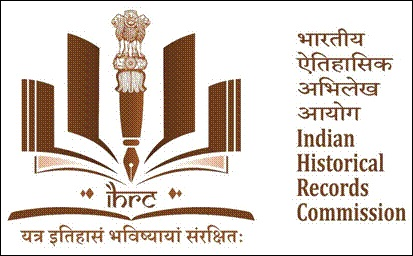
- Logo: The logo shape resembles lotus petals, the Sarnath pillar in the middle of the logo represents India’s ancient past, while the brown color theme emphasizes IHRC’s mission of preserving, studying, and honoring India’s historical records.
- Motto: "Where history is preserved for the future," reflects the IHRC's commitment to identifying, collecting, cataloging, and safeguarding historical documents and manuscripts for present and future generations.
- The IHRC was established in 1919 and is headed by the Union Minister of Culture, serving as an all-India forum for creators, custodians, and users of historical records.


Rapid Fire
Dragon's Egg Nebula
Astronomers have been puzzled by a nebula, nicknamed the Dragon’s Egg, which comprises a cloud of gas and dust enveloping a binary star system.
- The Dragon’s Egg Nebula formed due to the intense stellar winds emitted by a massive, hot central star.
- One of the stars in the pair of binary stars has a magnetic field, while the other does not, which is unusual for massive stars.
- The magnetic star is about 30 times more massive than the Sun, while its companion is about 26.5 times more massive than the Sun.
- The researchers believe the system started as a triple star system about 4-6 million years ago.
- The merger of the two innermost stars ejected gas and dust into space, forming the nebula around 7,500 years ago.
- The nebula contains an unusually large amount of nitrogen due to the merger.


Place In News
Padta Bet
Archaeologists from Kerala University have recently discovered a 5,200-year-old Harappan settlement at Padta Bet.
- It is located approximately 1.5 km from Juna Khatiya, an Early Harappan necropolis, in the Kutch district of Gujarat.
About Juna Khatiya:
- It is one of the biggest Harappan burial sites with the possibility of 500 graves.
- The burials discovered at this site date from 3,200 BCE to 2,600 BCE, predating Dholavira and several other Harappan sites in Gujarat.
- The site is important because others like Dholavira have a cemetery in and around the town, but no major habitation has been discovered near Juna Khatiya.


